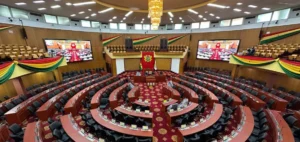Argentina, in financial crisis, could have to pay up to $16 billion in damages to shareholders for the 2012 nationalization of oil company YPF, according to a U.S. court ruling Friday against which Buenos Aires will appeal.
Nationalization of YPF: Argentina risks paying $16 billion in damages
YPF, a former subsidiary of Spain’s Repsol group, was largely nationalized in May 2012 under President Cristina Kirchner, raising questions at the time about the security of financial investments in South America’s third-largest economy. In 2014, after long months of conflict, Repsol reached an agreement with Buenos Aires “guaranteeing” financial compensation of five billion dollars. However, in 2015, this sprawling case against the Argentine state and YPF was brought before the US federal courts in New York by Burford Capital, a firm specializing in the purchase of third-party litigation and representing the oil company’s shareholders: Petersen Energia Inversora and Eton Park Capital Management.
According to an order from Manhattan federal judge Loretta Preska, made public on Friday, the plaintiffs were seeking up to 8% compensatory interest in addition to some $8.43 billion in damages for the nationalization of YPF. According to the financial press, this would bring to around $16 billion (including $7.62 billion in interest) the amount Argentina would have to pay minority shareholders in compensation.
U.S. Judge Resolves Details of Interests in YPF Nationalization Case
The U.S. judge also ruled on the exact date, in the spring of 2012, from which interest must be calculated. “The Court considers that the interest rate of 8% is adequate and that it must run from May 3, 2012”, the date on which the Argentine Parliament had passed the law nationalizing YPF, and not April 16, 2012, when Argentina had announced this takeover and “then exercised indirect control over the necessary number of Repsol shares”.
“The Argentine government will immediately appeal” this judicial decision, which could take months or even years, and “President Alberto Fernández”, currently at the G20 summit in India, “has already discussed the situation with the Argentine Treasury Prosecutor”, announced his spokeswoman Gabriela Cerruti on X (ex-Twitter).
“We will continue to defend energy sovereignty and our public company YPF against the vulture funds,” she wrote, referring to the plaintiffs.
Argentina, which is in the throes of a financial and economic crisis and has just received further support from the IMF, had agreed to pay $4.9 billion in damages, but without interest.
Why does it matter?
The outcome of this legal case has major economic and financial implications. Argentina’s potential decision to pay up to $16 billion in damages could have an impact on its already precarious financial situation. It also underlines the importance of international investment security and corporate nationalization disputes in the current global economic context. Future developments in this case deserve particular attention for those interested in issues of national sovereignty and international investment in the energy sector.






















